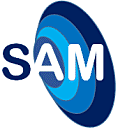Requirements Management
Tools and Strategies for Successful Requirements Management in Product Development
Managing project requirements effectively is crucial for successful product development. To ensure smooth collaboration and efficient communication between stakeholders, teams require robust tools and strategies for requirements management. This article explores the importance of traceability, streamlining the requirements management process in agile development, and effective techniques to handle project requirements.
The Importance of Traceability in Requirements Management
Traceability plays a vital role in requirements management, providing a clear link between the initial requirements, their evolution, and the final product. It enables teams to understand the impact of changes, identify potential risks, and ensure compliance with regulatory standards. By using traceability tools, such as requirement management software, teams can track the entire lifecycle of requirements, making it easier to assess their completeness and manage any dependencies.
Streamlining Requirements Management Process in Agile Development
Agile development methodologies have gained popularity due to their flexibility and iterative nature. However, managing requirements in an agile environment can be challenging without proper streamlining. Agile teams can benefit from employing techniques like user stories, prioritization, and frequent feedback loops. By breaking down requirements into smaller, manageable chunks, teams can maintain focus, adapt to changing priorities, and ensure efficient delivery of customer value.
Effective Techniques for Managing Project Requirements
Managing project requirements requires a systematic approach that ensures clarity, alignment, and collaboration. One effective technique is creating a detailed requirements document that captures all essential information, including functional and non-functional requirements, acceptance criteria, and constraints. Additionally, using collaborative platforms and tools, such as cloud-based project management software, enables real-time collaboration, version control, and streamlined communication among team members.
Tools for Requirements Management in Product Development
A wide range of tools are available to assist teams in managing project requirements efficiently. These tools offer features like requirement capture, traceability, version control, and reporting capabilities. Some popular options include requirements management software like IBM Rational DOORS, Jama Connect, and Microsoft Azure DevOps. These tools provide a centralized repository for requirements, facilitate collaboration, and enhance overall visibility into the development process.
In conclusion, successful requirements management in product development relies on the effective use of tools and strategies. By emphasizing the importance of traceability, streamlining the requirements management process in agile development, and employing effective techniques, teams can ensure better project outcomes, reduced risks, and improved customer satisfaction.



1 Отзыв
Protect the investments you’re making in enterprise IT projects and software development. With Software Asset Management, you’ll be able to manage your software development lifecycle efficiently and ensure that bespoke software solutions become true assets to your business
- Программное обеспечение для управления требованиями — это инструмент, предназначенный для того, чтобы помочь командам эффективно собирать, документировать, отслеживать и управлять требованиями проекта на протяжении всего жизненного цикла разработки программного обеспечения. Он предоставляет централизованный репозиторий для требований, облегчает совместную работу членов команды и предлагает такие функции, как отслеживаемость, контроль версий и возможности создания отчетов.
- Использование программного обеспечения для управления требованиями дает ряд преимуществ, в том числе улучшенную ясность и понимание требований проекта, улучшенное взаимодействие и общение между членами команды, лучшую отслеживаемость и анализ влияния, повышенную эффективность управления изменениями и общее улучшение результатов проекта.
- Программное обеспечение для управления требованиями предоставляет платформу для совместной работы команд над определением, документированием и проверкой требований. Это позволяет нескольким заинтересованным сторонам вносить свой вклад, комментировать и просматривать требования в централизованном месте, обеспечивая каждому доступ к самой последней информации и способствуя эффективному сотрудничеству и общению.
- При выборе программного обеспечения для управления требованиями рассмотрите такие функции, как сбор и организация требований, отслеживаемость, контроль версий, отчетность и аналитика, возможности интеграции с другими инструментами разработки, функции совместной работы и комментирования, настраиваемые рабочие процессы и масштабируемость для удовлетворения потребностей вашей команды.


